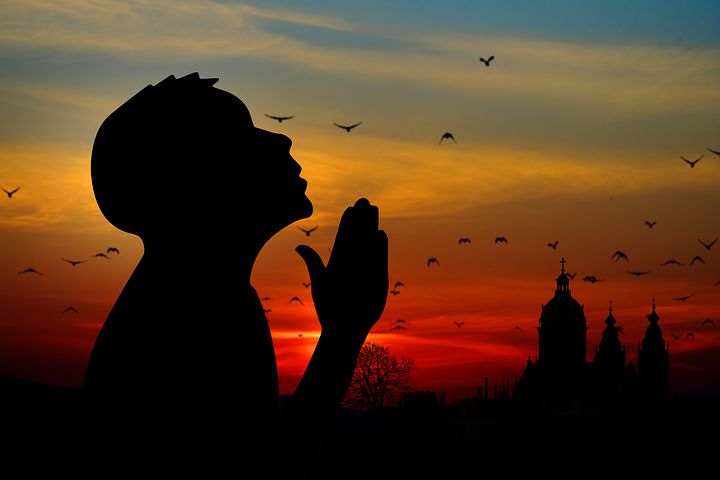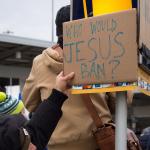 As the believers continue to throw mud at each other and argue about who is right and wrong, many polls show that the religiosity is on the decline and atheism and the “Nones” are on the rise. Not saying there is a cause and effect but one wonders if the behavior of the believers is contributing to the rising atheism and the Nones effect.
As the believers continue to throw mud at each other and argue about who is right and wrong, many polls show that the religiosity is on the decline and atheism and the “Nones” are on the rise. Not saying there is a cause and effect but one wonders if the behavior of the believers is contributing to the rising atheism and the Nones effect.
To be sure, the rate of atheism and the Nones (those who do not identify with a religion) remains low and the proportion of those who believe in God or a higher power remains substantially high in the USA and worldwide. However many polls by Pew research center and WIN-Gallup international show that the atheism and those who are unaffiliated is on the rise.
WIN-Gallup conducted a large international study in 2012 (and compared it with a similar study from 2005) of over 50,000 people asking a simple question: “Irrespective of whether you attend a place of worship or not, would you say you are a religious person, not a religious persons or a convinced atheist?” Following is a brief summary from the poll.
Religious=59%
Not religious=23%
Convinced atheist=13%
The top ten atheist populations are the following:
| Countries | A religious person | Not a religious person | A convinced atheist | Don’t know / no response |
| China | 14% | 30% | 47% | 9% |
| Japan | 16% | 31% | 31% | 23% |
| Czech Republic | 20% | 48% | 30% | 2% |
| France | 37% | 34% | 29% | 1% |
| Korea, Rep (South) | 52% | 31% | 15% | 2% |
| Germany | 51% | 33% | 15% | 1% |
| Netherlands | 43% | 42% | 14% | 2% |
| Austria | 42% | 43% | 10% | 5% |
| Iceland | 57% | 31% | 10% | 2% |
| Australia | 37% | 48% | 10% | 5% |
| Ireland | 47% | 44% | 10% | 0% |
The top 10 ‘religious’ populations are as following:
| Countries | A religious person | Not a religious person | A convinced atheist | Don’t know / no response |
| Ghana | 96% | 2% | 0% | 1% |
| Nigeria | 93% | 4% | 1% | 2% |
| Armenia | 92% | 3% | 2% | 2% |
| Fiji | 92% | 5% | 1% | 2% |
| Macedonia | 90% | 8% | 1% | 1% |
| Romania | 89% | 6% | 1% | 3% |
| Iraq | 88% | 9% | 0% | 3% |
| Kenya | 88% | 9% | 2% | 1% |
| Peru | 86% | 8% | 3% | 3% |
| Brazil | 85% | 13% | 1% | 1% |
Among the believers, the Christians were most likely to say they are ‘religious’.
| Religions | ‘I am Religious’ | Not Religious |
| Christians (all denominations) | 81% | 16% |
| Muslims | 74% | 20% |
| Jews | 38% | 54% |
| Hindus | 82% | 12% |
In the Unites States, the numbers were as follows, along with a small sample from few other countries. (The responses don’t add up to 100% if there was no response or ‘don’t know’ response).
Country ‘I am religious’ Convinced atheist
USA 60% 5%
Saudi Arabia 75% 5%
Pakistan 84% 2%
India 81% 3%
Palestinian 65% 4%
Territories
 I don’t know about you, but I was surprised to see the rate of atheism being the same in the USA and Saudi Arabia. Moreover the rate of ‘not religious’ plus atheists is about the same in the USA and Gaza strip/West Bank.
I don’t know about you, but I was surprised to see the rate of atheism being the same in the USA and Saudi Arabia. Moreover the rate of ‘not religious’ plus atheists is about the same in the USA and Gaza strip/West Bank.
Trend in atheism/religiosity on the WIN-Gallup poll from 2005 to 2012 poll:
In the USA, the rate of atheism rose from 1% to 5% and those who report themselves as ‘religious’ dropped from 73% in 2005 to 60% in 2012.
Similar numbers were seen by Pew Research Center’s 2014 Religious landscape Study, showing an increase in the ‘Nones’ (atheists, agnostics, unaffiliated) rising from 16.1% in 2007 to 22.8% in 2014.
I published a post a few months ago, UnChurched, UnSynagogued and UnMosqued to go over the reasons as to why they are leaving. To be sure, leaving the place of worship does not necessarily mean they are leaving the religion, but the polls do show a clear trend away from organized religions. It is indeed a complex subject and any attempt to simplify it would leave to erroneous conclusions. But this trend is cause for concern for those of us who do care about belief in God and food for thought for those who are ‘in charge’ of religiosity and places of worship. How do they make these places more welcoming? They need to ask their congregations about their reasons for leaving, in addition to analyzing the polls on this subject. And what’s the responsibility of a believer as an individual? Right or wrong, they are often seen as role models, and as “representatives” of their faith traditions-a heavy responsibility they may not have asked for but carry it nonetheless.
The least we can do is to stop throwing mud at each other.












